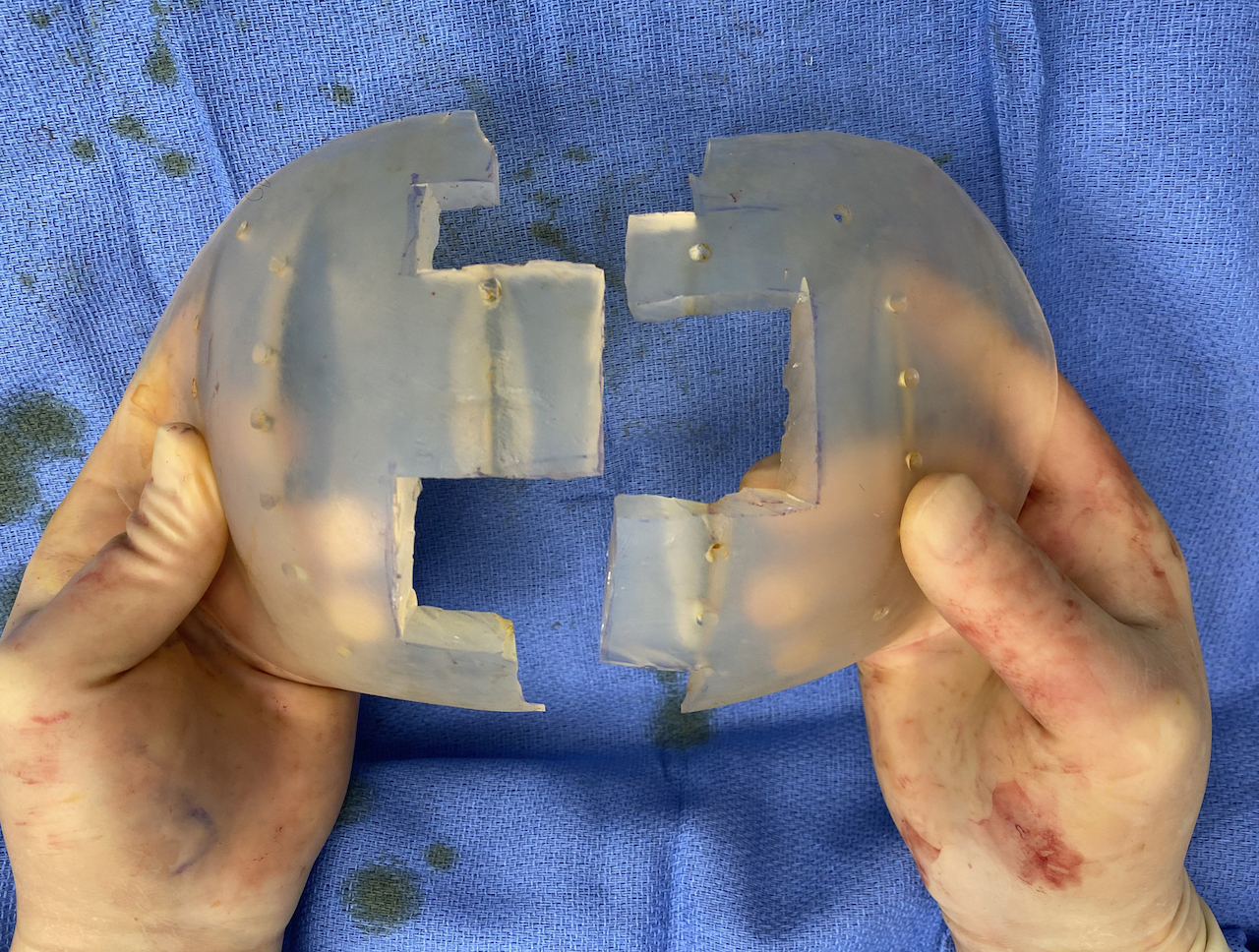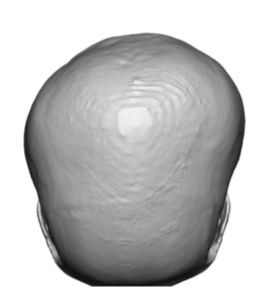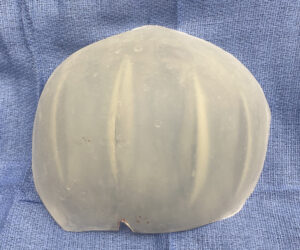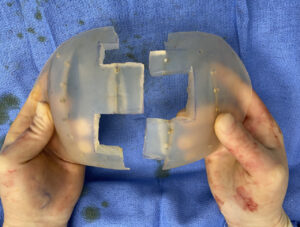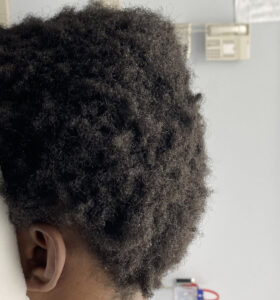Background: A flat back of the head is the most common aesthetic skull deformity in my experience. It may present as a plagiocephalic appearance with a one-sided flatness or a brachcephalic appearance with an overall (bilateral) flatness. It is most common to see a combination where one side is flatter but the patient wants both sides fuller as well. Many more men present for flat back of the head surgery than women for the greater visibility of the back of their head due to short hair or a shaved head.
Int designing a custom skull implant there are obvious shape and thickness differences based on whether it is designed for a unilateral or bilateral flat back of the head. Such shape differences can have implications for the method of insertion and placement. Since such skull implants are never placed by a major coronal scalp incision the need to keep the incisional length small always make their placement challenging.
Most skull implants are placed by a rolled technique in which they undergo a temporary shape deformation to pass through the small incision. While that technique works most of the time, a very thick implant may make that method unsuccessful. When this situation presents an intraoperative innovation is needed to get the skull implant placed.
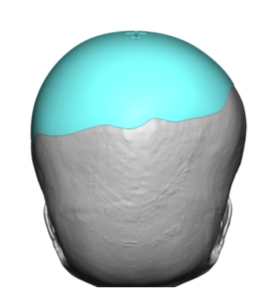
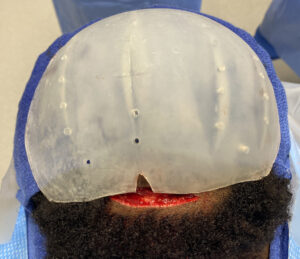

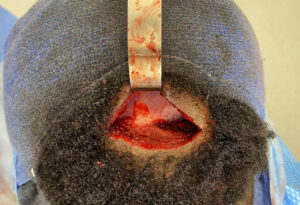
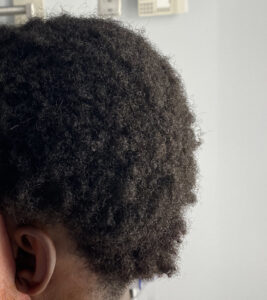
Case Highlights:
1) A flat back of the head requires a custom skull implant whose insertion technique is based on implant shape and thickness.
2) With back of head skull implants that are more wide than tall and thick centrally a geometric split technique may be needed for placement in an effort to keep the scalp incision as small as possible.
3) To maneuver the two piece implant around once inside to get it to snap together the extent of the subperiosteal dissection must extend beyond the footprint of the implant.
Dr. Barry Eppley
Indianapolis, Indiana

